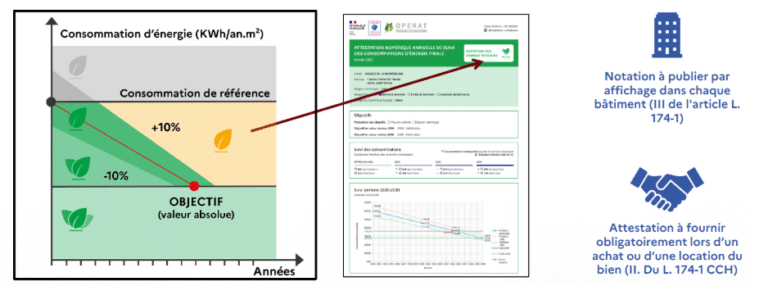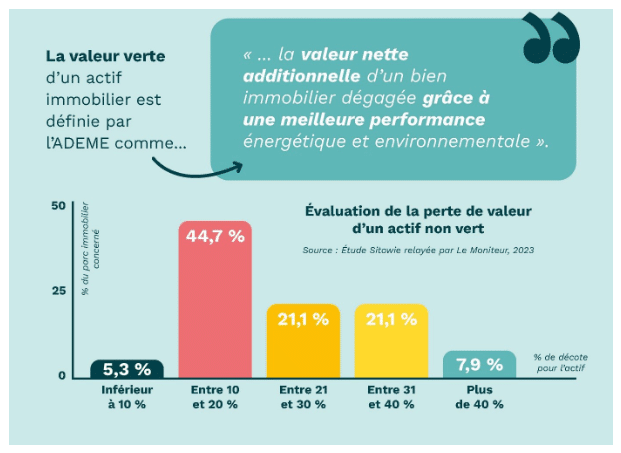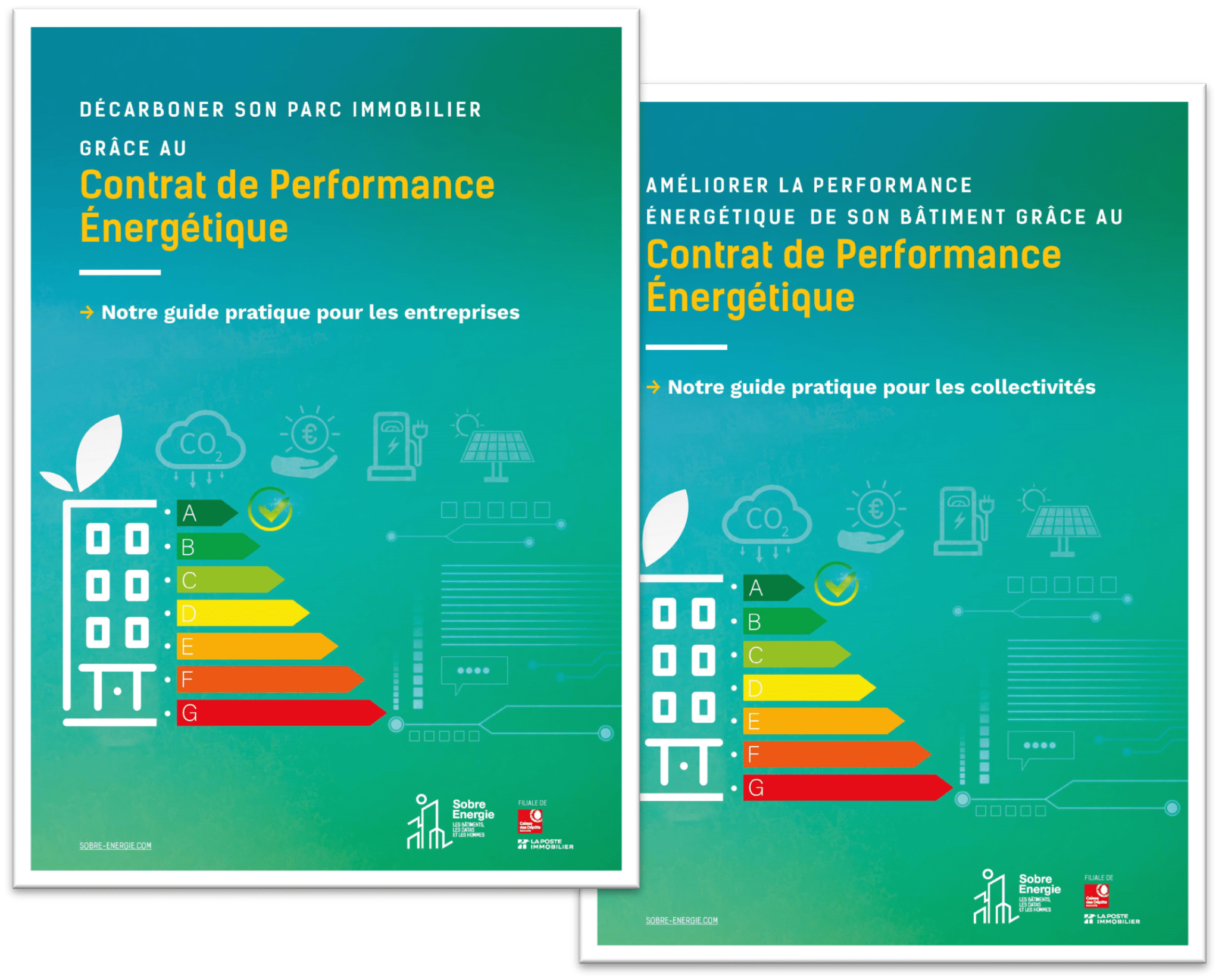Regulatory objectives for decarbonization of tertiary buildings are being strengthened this year. Reminder of deadlines and tools to reduce energy consumption.
Tertiary Decree 2030, the first notes
What changes in 2025
Each year, subject buildings are assigned Tertiary Eco Energy ratings, attesting to their consumption reduction trajectory with a view to the 2030 deadline.
According to the Ministry of Ecological Transition, the 1st notes will be downloadable on the ADEME OPERAT platform from mid-January. These notes will concern the consumption declared on OPERAT for the year 2023.

Source: Ministry of Ecological Transition
A poor Eco Energy Tertiary rating reveals:
- Higher operational costs
- Degraded occupant comfort
- Work to be planned to catch up with the set trajectories
- Potential fines to come
All of these elements degrade the value of assets for sale or rental... but also the ability of managers to finance them!
In a context of falling valuations, the Tertiary Decree can become a differentiating asset for owners. Indeed, the most energy-efficient buildings will probably be best equipped to withstand market sluggishness.
Investors and users will in fact be increasingly attentive to these performance criteria, which directly impact operating costs and the competitiveness of tenant companies. An eco-responsible building will therefore have a better chance of standing out and maintaining its value, and even seeing it increase.
The market has already integrated this: green assets are much better valued.

How to meet your objectives Tertiary Decree 2030
They are based, for each category of activity, on two subsets of values:
“HVAC” values (representative of heating, ventilation, air conditioning consumption). They are established for 8 climatic zones and 5 altitude categories, with a reference climate, depending on the zone in which the building is installed.
“USE” values (other consumption items, generally dependent on the intensity of use of the building), accompanied by a modulation formula to take into account the intensity of use of the building. That is to say the time range of the use in question in the building.
These objectives were established on the basis of different sources of information, and with the help of numerous contributions from stakeholders made as part of the consultation, whether in writing or during consultation meetings.
Thus for the modulation of objectives according to the volume of activity, the modulation formulas are modified as follows:
“Crelat modulated (V) 2030 = (1 – 0.4) × Cref × [Cabs modulated (V) / Cabs modulated (Vréf)].
“Crelat modulated (V) 2040 = (1 – 0.5) × Cref × [Cabs modulated (V) / Cabs modulated (Vréf)].
“Crelat modulated (V) 2050 = (1 – 0.6) × Cref × [Cabs modulated (V) / Cabs modulated (Vréf)].
The BACS Decree deadline is January 1, 2025
Who is affected?
The BACS (Building Automation & Control Systems) decree was published in July 2020 and requires the installation of building automation and control systems GTB (Technical Building Management) for tertiary buildings. This decree aims to improve the energy performance of buildings by making it compulsory to install systems allowing the management, monitoring and optimization of energy consumption.
The main obligations of the decree include:
- The installation of a BACS system for new buildings or during major renovations.
- The integration of devices allowing the automatic regulation of heating, ventilation, air conditioning (HVAC), and lighting.
- The implementation of management systems to monitor energy consumption in real time, which facilitates the identification of areas for energy savings.
The timetable of the BACS Decree
The application schedule is as follows:
- Since April 8, 2024 for new buildings whose equipment has a cumulative nominal power greater than 70 kW.
- January 1, 2025 for existing buildings whose equipment has a cumulative nominal power greater than 290 kW.
- January 1, 2027 for existing buildings whose equipment has a cumulative nominal power greater than 70 kW.
GTB to respond to the BACS Decree
- Heating, Ventilation and Air Conditioning (HVAC) systems,
- Plumbing installations,
- Distribution and production of electricity,
- lighting,
- Security, video surveillance, access control,
- Fire-fighting devices: alarms, extinguishing, etc.
A non-wired “light” BMS solution, as offered by Orange Business and Sobre Energie, makes it possible to consolidate the management of tertiary buildings for energy savings of between 20% and 30%.
Decarbonization of tertiary buildings and mobility
LOM law, what changes in 2025
From January 1, 2025, the LOM law (Mobility Orientation Law) will require tertiary buildings, new or renovated, to be equipped with a certain number of electric charging stations for vehicles: a charging point must be provided for every 20 parking spaces. This measure, in favor of the energy transition, is part of a global desire to decarbonize the building and transport sector.
Tertiary buildings, which include offices, shops, hotels, public establishments, etc., represent a significant part of energy consumption. Their transition to greener mobility is therefore essential not only to reduce greenhouse gas emissions, but also to meet the requirements of an increasingly demanding legislative framework in terms of sustainability.
The impact on the energy consumption of buildings
The addition of charging stations will logically increase the demand for electricity. It is crucial for building managers to anticipate this increase in consumption, by adjusting the electrical capacity of their building, or even by planning load optimization systems. These systems, often called "smart charging", make it possible to regulate peaks in consumption, distributing energy more efficiently and avoiding network overloads.
It is also important to provide sub-meters in order to be able to distinguish electricity consumption due to charging stations.
